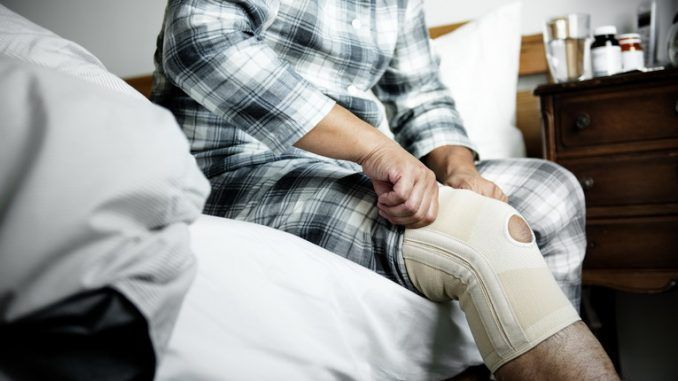
Knee Adrians Gemini Knee pain conservative route first
Knee, Adriani, Gemini: “Knee pain, conservative route first”
Knee pain can’be a common problem and involve people of any age’ but behind some discomfort can’hide a more important problem that should not be underestimated. Also because’ earliness’ d’intervention, conservative or surgical, is’essential to overcoming the problem. To understand what is new in the surgical and prosthetic fields affecting the knee, the Dire news agency caught up via Skype with Professor Ezio Adriani, director of the Center for Sports Traumatology and Knee Surgery at Polyclinic A. Gemelli IRCCS in Rome.
Joint damage and knee pain.
What may be the causes and symptoms that should not be underestimated?
“The causes of joint damage are mainly due to an overload that wears down our joints and especially the cartilage that is’the most important anatomical element’of our joints. Overload can’originate either from a’work activity, from excess weight, from trauma, and from genetics that is, it depends on the conformation of our joints and the load they are going to be subjected to over a lifetime. The first symptoms when cartilage wear occurs to watch out for are pain and the presence of a fluid inside the joint.
This is’a sign that something is changing and the patient has difficulty’performing normal daily activities such as going down stairs, sitting for a long time and of course loss of movement while the joint, under normal conditions, should move. Loss of movement then even by a few degrees alters what are our performances in activities’both daily and sports”.
When it’s necessary to undergo the surgery? And what are today’s most innovative surgical techniques?
“Before undergoing surgery, a diagnosis must be made and the causes of the problem must be understood. Then you can’intervene by first following a conservative course in order to preserve as much as possible the joints. If you are faced with the rupture of a structure that needs to be repaired think of a meniscus, an ACL, cartilage you need to intervene immediately.
If it’s necessary to replace a worn structure, a conservative course is taken first, which involves a series of changes in lifestyles. First and foremost, losing weight, practicing a’less aggressive sports activity’and exercising. Perform proper physiotherapy that can help in the pathway and reduce pain and then think about infiltrations performed by the orthopedist that can be composed of hyaluronic acid, a substance that lubricates the joint allowing for smoother movement or it can be composed of cortisone that reduces inflammation.
If that isn’t enough, one can resort to advanced infiltrations. I am referring to what are mistakenly referred to as stem cells and instead are substances in the blood, marrow and adipose tissue that can help restore what is’joint balance.
All of this helps us in the conservative course butwhen all of these procedures fail and there is a correct indication, when there is a loss of the joint rhymes, then the surgeon has to intervene”.
You hear about osteotomy, what is it and what are the benefits for the patient?
“Certainly, before thinking about a prosthesis implant it’s necessary to intervene and try to correct the deformities’.
The’osteotomy is nothing more than a fracture, a cutting of the’bone. If there is a joint structure present that is’deviated in varus,
the typical O-shaped knee of men or in valgus, the typical X-shaped knees of women, and’ it is clear that both
types of structures will lead to greater wear and tear of compartments, inner and outer respectively, and this
causes pain and inflammation in the patient.
The specialist can’intervene by correcting these axes. How? By making a cut of the tibia or femur, depending on the deformity’ to go in and recreate the right axis.
Today it’s possible to use very advanced methods thanks to computer reconstructions that allow us to be precise to the degree of correction”.
Knee prosthesis can’be partial or total. What is’ the criterion that guides the specialist in the choice? And is there’need’after years to be replaced or not?
“Once the cartilage stock has been consumed despite the patient having put in place all the mechanisms of
protection and’ clearly you are faced with a knee with the joint rhyme completely worn out. This will prevent’a
that knee to move.
Today the solutions are very advanced and in fact allow to replace the joint even not completely. If the subject has complete wear and tear then you can’think about doing a total prosthesis. So’s the prosthesis?
It’s the replacement of the cartilage of the joint space, and that is, the femur and tibia are encapsulated and a particularly strong plastic component of polyethylene is inserted in between.
And this can’be total when it involves both components of the knee compartments, medial and lateral or partial when it’s only one compartment ruined. At this point we speak of a monocompartmental prosthesis. The reduced invasiveness’, returns a less bloody intervention and relative very rapid rehabilitation.
This is why when it’s possible to resort to monocompartimental is preferred because it’s superior to total in that it allows the cruciate ligaments to be maintained which is not possible to pursue with total prosthesis. So the patient with partial prosthesis will definitely have a higher performance in its use than the total one. That’s not always possible and therefore indications must always be followed in those cases of total prosthesis the surgeon has to be very precise to make them last because’ we know that a prosthesis lasts the longer it’s properly placed.
What is new are navigation systems that allow precision, even in osteotomy, and allow precise cuts to be made thanks to advanced robotics systems that have now entered prosthetic surgery. The advantage is’ also minimizing technical errors. In addition, since the last study published last year in the journal Lancet confirms that prostheses still remain in place after 25 years in 82% of total prostheses and 70% of single-compartment prostheses”.
